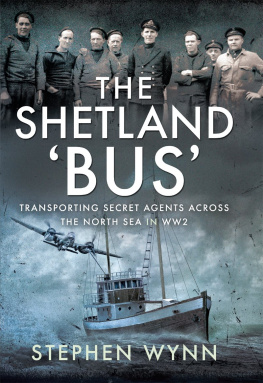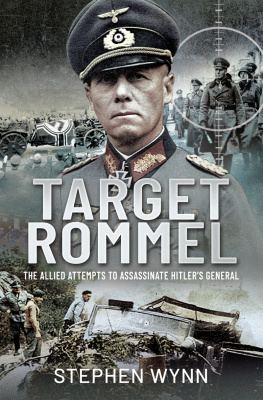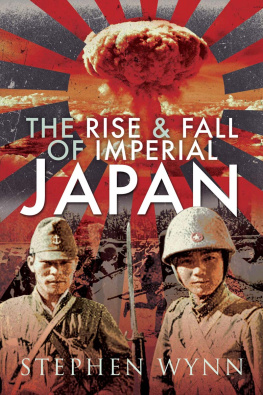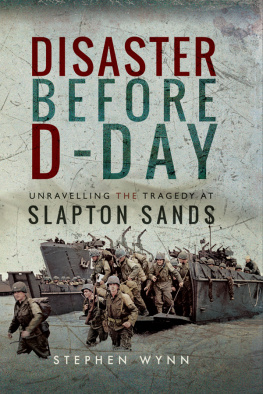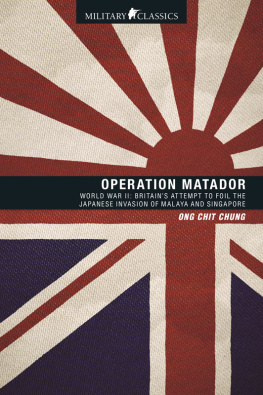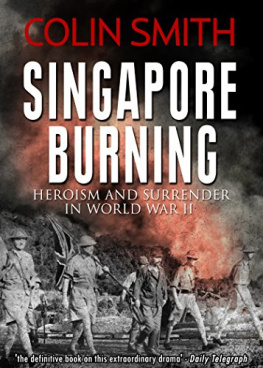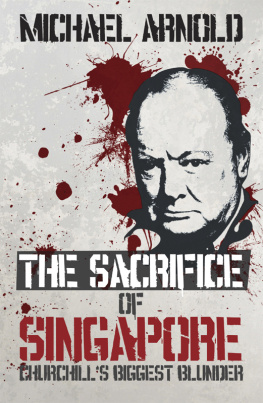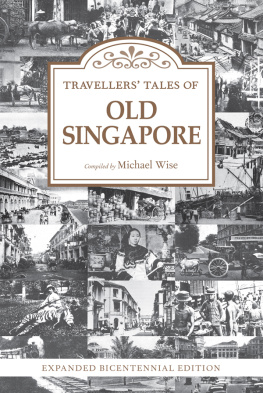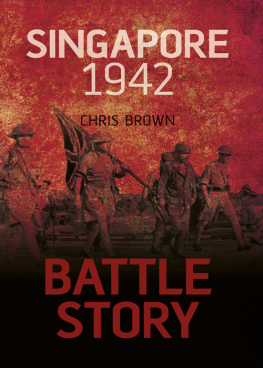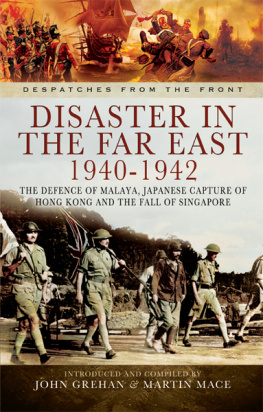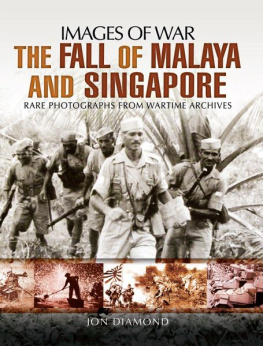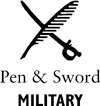
THE SURRENDER OF SINGAPORE
AUTHORS BIOGRAPHY
Stephen is a happily retired police officer having served with Essex Police as a constable for thirty years between 1983 and 2013. He is married to Tanya who is also his best friend.
His two sons, Luke and Ross, were members of the armed forces, collectively serving five tours in Afghanistan between 2008 and 2013. Both of them were injured on their first tours which led to the publication of Stephens first book, Two Sons in a Warzone Afghanistan: The True Story of a Fathers Conflict , which was published in October 2010.
Stephen co-wrote a book published in August 2012 entitled German POW Camp 266 Langdon Hills . It spent six weeks as the number one best-selling book in Waterstones, Basildon between March and April 2013.
Stephen has also co-written three crime thrillers, published between 2010 and 2012, which centre around a fictional detective named Terry Danvers.
He has also written numerous other books for Pen & Sword Books Limited, many of which were part of the Towns and Cities collection, which commemorated the sacrifices made by young men up and down the country during the First World War.
Both of Stephens grandfathers served in and survived the First World War, one with the Royal Irish Rifles, the other in the Mercantile Navy, while his father was a member of the Royal Army Ordinance Corp during the Second World War.
When he is not writing, he and Tanya enjoy the simplicity of walking their dogs early each morning when most sensible people are still asleep.
THE SURRENDER OF SINGAPORE
Three Years of Hell 194245
By Stephen Wynn
First published in Great Britain in 2017 by
PEN & SWORD MILITARY
an imprint of
Pen & Sword Books Ltd
47 Church Street
Barnsley
South Yorkshire
S70 2AS
Copyright Stephen Wynn, 2017
ISBN 978-1-47382-402-7
eISBN 978-1-47386-487-0
Mobi ISBN 978-1-47386-486-3
The right of Stephen Wynnn to be identified as Author of this work has been asserted by him in accordance with the Copyright, Designs and Patents Act 1988.
A CIP catalogue record for this book is available from the British Library.
All rights reserved. No part of this book may be reproduced or transmitted in any form or by any means, electronic or mechanical including photocopying, recording or by any information storage and retrieval system, without permission from the Publisher in writing.
Pen & Sword Books Ltd incorporates the Imprints of Pen & Sword Aviation, Pen & Sword Family History, Pen & Sword Maritime, Pen & Sword Military, Pen & Sword Discovery, Pen & Sword Politics, Pen & Sword Atlas, Pen & Sword Archaeology, Wharncliffe Local History, Wharncliffe True Crime, Wharncliffe Transport, Pen & Sword Select, Pen & Sword Military Classics, Leo Cooper, The Praetorian Press, Claymore Press, Remember When, Seaforth Publishing and Frontline Publishing.
For a complete list of Pen & Sword titles please contact
PEN & SWORD BOOKS LIMITED
47 Church Street, Barnsley, South Yorkshire, S70 2AS, England
E-mail:
Website: www.pen-and-sword.co.uk
ACKNOWLEDGEMENTS
My thanks go out to Mrs Wynn Robertson for providing photographs of the MV Krait which can be found at the Australian Maritime Museum at Darling Harbour in Sydney. Also for the information which she provided in relation to the secret Second World War training camp, which was situated at Broken Bay, New South Wales.
My thanks also go to Mr Aron Manzanillo for providing photographs of the Civilian War Memorial which is situated within the War Memorial Park in Beach Road, immediately opposite the Swissotel at the Raffles City Shopping Mall in Singapore City. The memorial was built in memory of the local civilians who were killed during the Japanese occupation of Singapore during the Second World War. It was officially unveiled on 15 February 1967 by the then Prime Minister of Singapore, Mr Lee Kuan Yew.
DEDICATION
This book is dedicated to the memories of all of the military personnel, nurses and civilians who were either killed during the Battle of Singapore in February 1942 or who died as a result of illness, disease, mistreatment or murder during the three and a half years of the Japanese occupation of the island from 15 February 1942 until 4 September 1945.
PROLOGUE
What history has recorded as the Second World War took place in two separate locations. First there was the war that took place throughout Europe and North Africa and then there was the war in the Pacific and the Far East.
In Europe and North Africa, Britain and her allies were fighting against Nazi Germany and a dictator who wanted to rule Europe for a thousand years and beyond with an Aryan super race.
During the war the Nazis also embarked on a systematic extermination of Jewish people who lived in the nations that they conquered, stealing their properties and belongings as they went. They amassed fortunes from seized paintings, statues and other art works. They emptied churches and other religious sites of centuries-old works and anything else of any value. They stole cash and gold from banks and financial institutions for their own personal gain wherever they went.
Not happy with using extermination units to murder the Jews, they embarked on building a number of massive extermination camps to continue the killings on an industrial scale.
Then there was Japan, whose Imperial Army and Navy had decided that they wanted to rule the entire Pacific region as well as Far East Asia, and they even had half an eye on Australia as well.
The similarities between Germany and Japan can be traced back to the years between the First and Second World Wars, when they began their individual quests for domination and supremacy.
In Japans case this went back even further. On 18 January 1915 she presented China with a list of twenty-one demands which, if adhered to, would have given Japan major control over most aspects of Chinese society and life.
On 19 September 1931 the Kwantung Army of the Empire of Japan invaded Manchuria, set up a puppet state, and stayed until the end of the Second World War. What was even more shocking was that the Kwantung Army had acted of their own volition and not with the support or say-so of the Japanese Government.
On 24 February 1933, Japan withdrew from the League of Nations in Geneva, after the assembly had adopted a report voted on by a majority of 42 to 1 which said Japan should withdraw her troops from Manchuria and restore the country to Chinese sovereignty. It was not a decision which went down well with the Japanese delegation.
The Second Sino-Japanese War began on 7 July 1937 and was fought between the Republic of China and the Empire of Japan, despite the latters claims that all she wanted was peace throughout the Far East. In essence the war was the result of a long-standing Japanese imperialist policy that was aimed at securing access to economic resources, mainly in relation to food and labour, as well as the available raw materials that China had to offer.
The war in the Pacific and the Far East started on 7 December 1941 with the attack on the American Fleet at Pearl Harbor and the invasions in Hong Kong and Thailand. So much for Japan being a friendly and tranquil nation who only wanted peace in the region.
The next four years would be recorded historically and remembered by the world as a time of Japanese brutality and atrocities. A nation who had decided on a path of waging an aggressive war, in a world where as far as she was concerned there was no such thing as the Geneva Convention on Human Rights, the only rules were what she decided they would be. Some of her soldiers maltreated and murdered both foreign soldiers and civilians with equal disregard and appeared to place no value on human life whatsoever. They certainly did not act in the honourable way that the code of Bushido stated that they should. They showed little in the way of moral righteousness, courage, benevolence, respect, honesty, honour or loyalty to those that they captured and interned.
Next page


